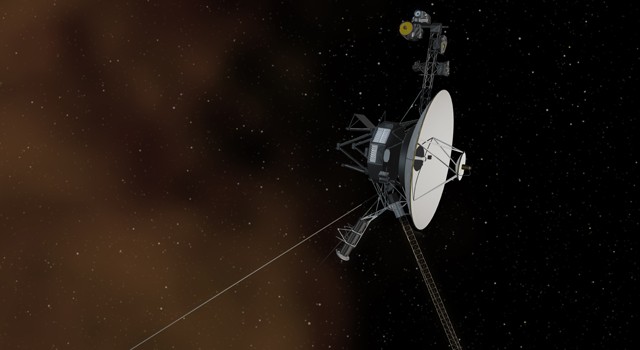A paper recently published in the journal Geophysical Research Letters describes an alternate model for the interaction between the heliosphere — a “bubble” around our planets and sun — and the interstellar medium. It also proposes a test for whether Voyager 1 has, indeed, left the heliosphere.
NASA’s Voyager project scientist, Ed Stone of the California Institute of Technology in Pasadena, responds:
“It is the nature of the scientific process that alternative theories are developed in order to account for new observations. This paper differs from other models of the solar wind and the heliosphere and is among the new models that the Voyager team will be studying as more data are acquired by Voyager.”
Stone went on to explain that other models, which he and colleagues used to conclude that Voyager 1 entered interstellar space, predict that the density of interstellar wind outside the heliosphere is 40 times greater than the density of the solar wind inside.
Voyager scientists had carefully analyzed the observational data from the spacecraft, which revealed a plasma density that was 40 times higher. They then concluded that Voyager 1 had departed the solar bubble and entered interstellar space around August 25, 2012.
But the new article argues that solar wind inside the heliosphere can be compressed to the point that the solar wind density inside is just as high as interstellar space outside. Therefore, Voyager 1 could still be inside.
Authors of the new study predict that if Voyager 1 is still inside the heliosphere, the spacecraft will observe a reversal in direction of the solar magnetic field sometime before the end of 2015. Stone said he and colleagues will be looking carefully at the magnetic field data over the coming 18 months to see if Voyager picks up this change.
The Voyager spacecraft were built and continue to be operated by NASA’s Jet Propulsion Laboratory, in Pasadena, California. Caltech manages JPL for NASA. The Voyager missions are a part of NASA’s Heliophysics System Observatory, sponsored by the Heliophysics Division of the Science Mission Directorate at NASA Headquarters in Washington.
For more information about Voyager, visit:
http://www.nasa.gov/voyager
http://voyager.jpl.nasa.gov
If our reporting has informed or inspired you, please consider making a donation. Every contribution, no matter the size, empowers us to continue delivering accurate, engaging, and trustworthy science and medical news. Independent journalism requires time, effort, and resources—your support ensures we can keep uncovering the stories that matter most to you.
Join us in making knowledge accessible and impactful. Thank you for standing with us!

